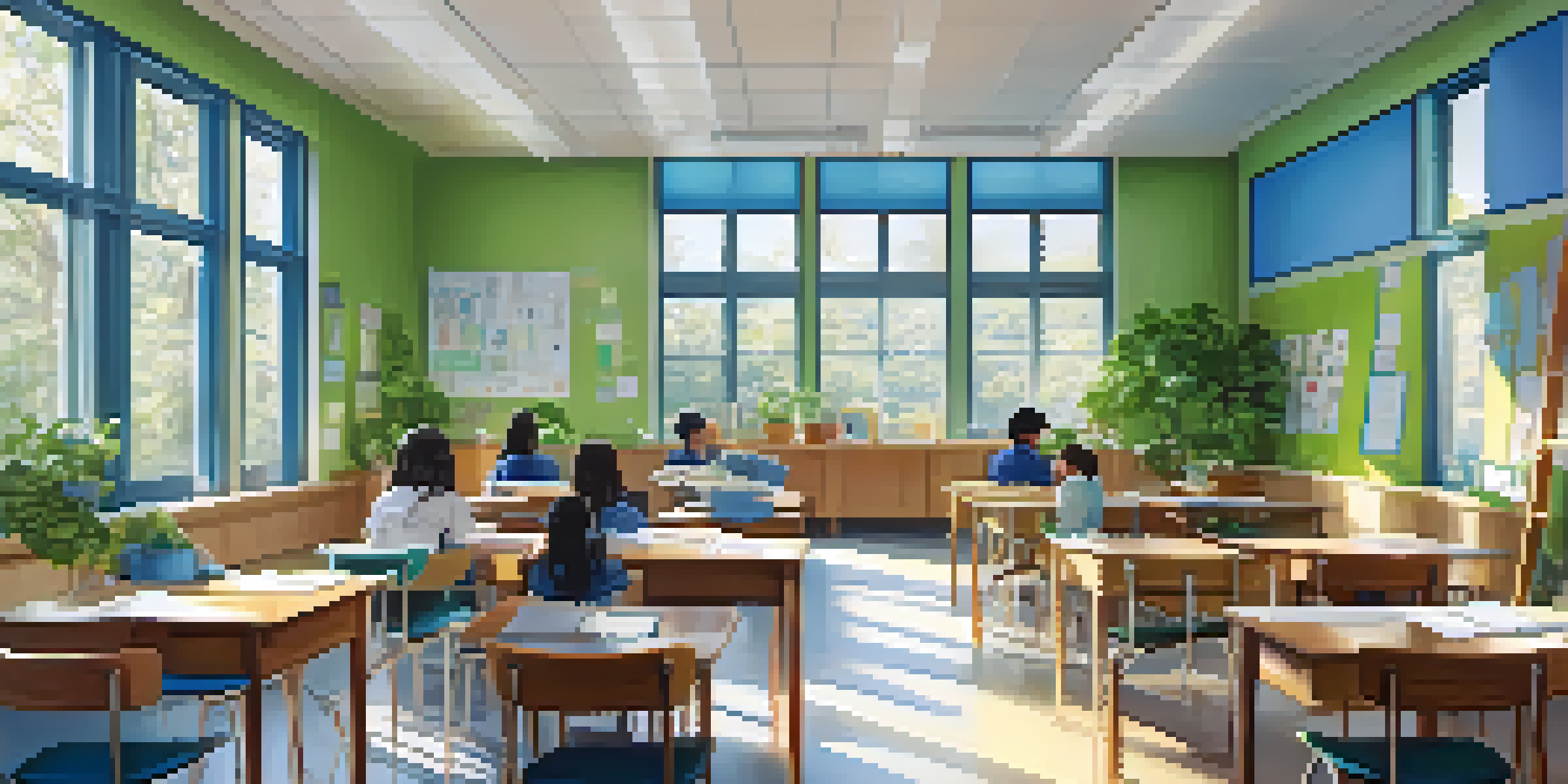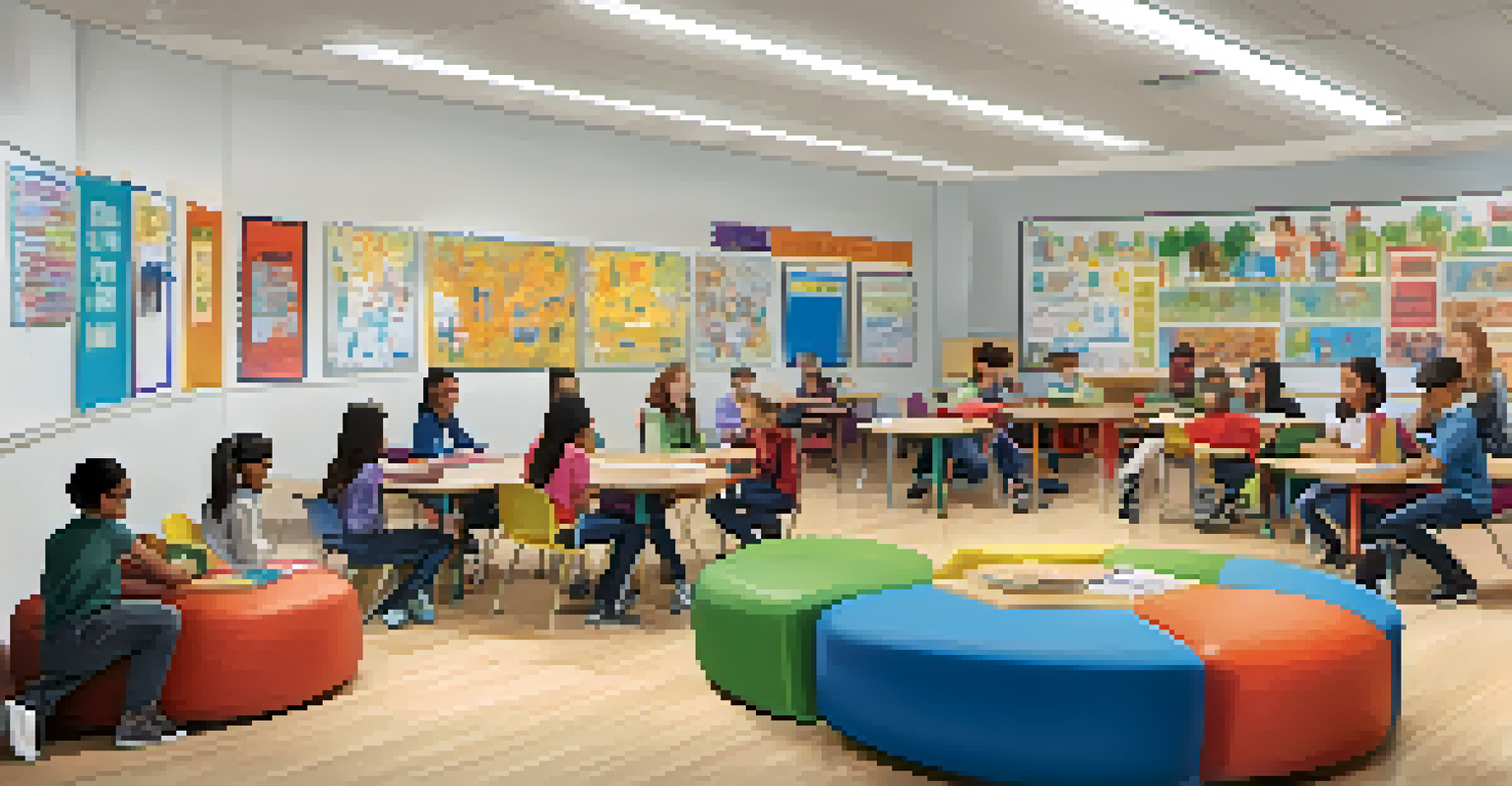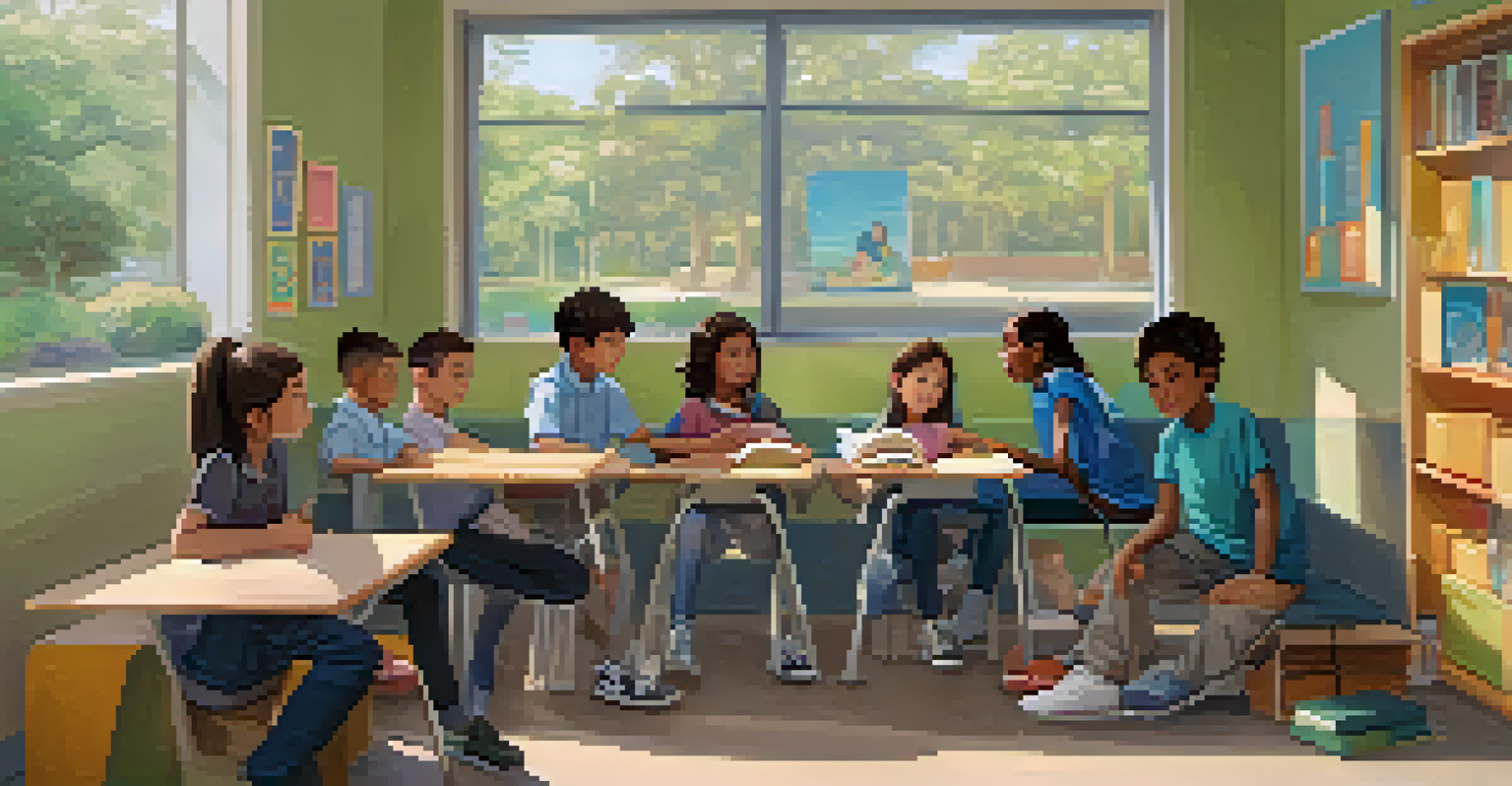Creating Safe Learning Environments: Design Considerations

Understanding the Importance of Safe Learning Spaces
Creating a safe learning environment is crucial for fostering student engagement and well-being. When students feel secure, they are more likely to participate, ask questions, and express themselves freely. It’s not just about physical safety; emotional and psychological safety are equally important in promoting a positive educational experience.
The best way to predict the future is to create it.
Consider the classroom as a sanctuary where students can explore and grow without fear. A well-designed space can significantly reduce distractions and create a sense of belonging. This nurturing atmosphere encourages collaborative learning, empowering students to support one another and develop vital social skills.
Moreover, safe environments contribute to better academic performance. When students are unburdened by safety concerns, they can focus on their studies and achieve their full potential. This holistic approach to safety helps in building not only knowledgeable individuals but also confident and resilient community members.
Incorporating Physical Safety Measures in Design
Physical safety is the foundation of any safe learning environment. This includes ensuring that the classroom is free from hazards, such as unsecured furniture or cluttered walkways. Thoughtfully arranged layouts can minimize risks and make emergency exits easily accessible, which is vital for student safety.

In addition to layout, consider the materials used in the classroom. Choosing non-toxic, durable materials can prevent accidents and injuries, while also promoting a healthier indoor environment. Safety features, such as rounded corners on furniture and slip-resistant flooring, can further enhance the physical security of learning spaces.
Importance of Safe Learning Spaces
A secure environment enhances student engagement, emotional well-being, and academic performance.
Finally, technology can play a role in physical safety as well. Implementing security systems, such as cameras or controlled access points, can help monitor the premises. While these measures might seem strict, they contribute to a sense of security that allows students to focus on learning.
Creating an Inclusive Atmosphere for All Students
Inclusivity is a crucial aspect of a safe learning environment. Every student deserves to feel valued and respected, regardless of their background, abilities, or identity. Designing classrooms with inclusivity in mind can foster a sense of belonging and allow all students to thrive.
Education is not the filling of a pail, but the lighting of a fire.
This can be achieved through thoughtful space planning, such as creating areas for collaboration alongside quiet zones for individual work. Additionally, providing varied seating options can accommodate diverse learning styles and preferences, making the space accessible to everyone. Inclusive design encourages students to embrace their differences and learn from one another.
Moreover, training staff to recognize and celebrate diversity can further enhance the atmosphere. When educators model respect and kindness, students are more likely to adopt similar behaviors. An inclusive environment not only safeguards students emotionally but also cultivates empathy and understanding among peers.
Utilizing Natural Light and Color Psychology
Natural light plays a significant role in creating a safe and inviting learning environment. Studies have shown that exposure to natural light can improve mood, concentration, and overall well-being. Classrooms with ample windows and light can make students feel more energized and engaged.
In addition to natural light, color choices can influence the emotional tone of a learning space. For instance, soft blues and greens are known for their calming effects, while warm colors like yellow can stimulate creativity and enthusiasm. Thoughtful use of color can help create an atmosphere that feels safe and conducive to learning.
Flexibility for Diverse Learning Needs
Adaptable classroom designs accommodate various learning styles, fostering collaboration and individual growth.
Designing with both light and color in mind can transform a classroom into a vibrant space. When students feel comfortable and inspired by their surroundings, they are more likely to participate actively in their education. This harmonious blend of elements lays the groundwork for a truly safe and nurturing learning environment.
Flexible Spaces for Diverse Learning Needs
Flexibility in classroom design is essential to accommodate diverse learning needs. Not every student learns the same way, and a one-size-fits-all approach can hinder their development. By incorporating movable furniture and multi-purpose areas, educators can adapt the space to suit various teaching methods and activities.
For instance, having modular desks allows for quick reconfiguration for group projects or individual assessments. This adaptability fosters collaboration and encourages students to engage in peer learning. Furthermore, creating spaces for both quiet reflection and active group work can cater to different learning preferences.
Ultimately, flexible design empowers educators to tailor their teaching approaches to their students' needs. When learners feel their individual styles are recognized and supported, they are more likely to thrive academically and socially. This adaptability is a cornerstone of creating truly safe and effective learning environments.
Integrating Technology for Enhanced Safety
In today’s digital age, integrating technology can greatly enhance the safety of learning environments. For example, utilizing classroom management software can help educators monitor student behavior and engagement in real-time. This proactive approach allows for timely interventions, ensuring a secure atmosphere.
Additionally, technology can facilitate communication between educators and parents. Tools like messaging apps or online portals enable parents to stay informed about their children’s progress and any concerns that arise. This open line of communication fosters a supportive community around students, further contributing to a sense of safety.
Continuous Improvement is Key
Regularly assessing learning spaces ensures they evolve to meet the needs of students and educators alike.
Moreover, training students to use technology responsibly is essential. Teaching them about online safety and digital citizenship equips them with the knowledge to navigate the digital world securely. This proactive approach not only enhances physical safety but also nurtures responsible, informed individuals.
Promoting Emotional Safety Through Support Systems
Emotional safety is just as vital as physical safety in learning environments. Establishing support systems, such as counseling services or peer mentoring programs, can help students navigate their emotional challenges. When students feel they have someone to turn to, their overall well-being improves, leading to a more positive learning experience.
Schools can also promote emotional safety by fostering open communication. Creating an environment where students can express their thoughts and feelings without fear of judgement encourages vulnerability and trust. This sense of security can empower students to share their struggles and seek help when needed.

Furthermore, incorporating social-emotional learning (SEL) into the curriculum can equip students with essential skills to manage their emotions and build resilience. When students learn how to cope with stress and support their peers, they contribute to a more compassionate and secure learning environment.
Continuous Assessment and Improvement of Learning Spaces
Creating safe learning environments is not a one-time task; it requires continuous assessment and improvement. Regularly gathering feedback from students, teachers, and parents can provide valuable insights into what works and what needs adjustment. This collaborative approach ensures that the space evolves to meet the changing needs of the learning community.
Additionally, staying informed about the latest trends in educational design and safety can inspire new ideas and innovations. Whether it’s implementing new technologies or redesigning spaces based on research, adaptability is key. A commitment to ongoing improvement reflects a dedication to creating safe and effective learning environments.
Ultimately, fostering a culture of safety requires the involvement of everyone in the educational community. When students, educators, and families work together to assess and enhance learning spaces, they create a dynamic environment where everyone can thrive. This dedication to continuous improvement is essential for nurturing future generations.